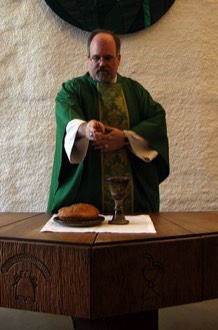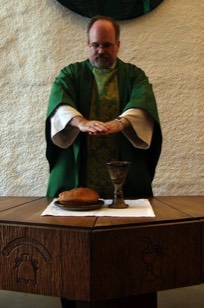Communion Liturgy Resources


The liturgies listed below are available for use in the planning of eucharistic services. Over time, and as they are written, more liturgies will be added. These are in PDF format, and should display well in most modern web browsers. Feel free to download them for your own use.

The Liturgies
United Methodist Great Thanksgivings
Word and Table I is the official communion liturgy of The United Methodist Church. Word and Table II is the form of the liturgy left open for adaption to the various days and themes of the Church year. Word and Table III is the most open form of the liturgy, providing for great variation.
- Word and Table I - The official communion liturgy of The United Methodist Church
- Word and Table II - For use during Advent A
- Word and Table II - For use during Advent B
- Word and Table II - For Christmas Eve / Day 1
- Word and Table II - For Christmas Eve / Day 2
- Word and Table II - For New Years Eve / Day
- Word and Table II - For Epiphany Sunday
- Word and Table II - For Sundays in Epiphany
- Word and Table II - For Baptism of the Lord Sunday
- Word and Table II - For Transfiguration Sunday
- Word and Table II - For use during Lent A
- Word and Table II - For use during Lent B
- Word and Table II - For Easter Sunday A
- Word and Table II - For Easter Sunday B
- Word and Table II - For Pentecost Sunday
- Word and Table II - For use in Common Time ("Sundays after Pentecost") A
- Word and Table II - For use in Common Time ("Sundays after Pentecost") B
- Word and Table II - For use in Common Time ("Sundays after Pentecost") C
- Word and Table II - For World Communion Sunday
- Word and Table II - For All Saints Sunday / Communion of the Saints
- Word and Table II - For Celebrating the Glory of God's Creation
- Word and Table II - For Celebrating God's Incarnate Grace
- Word and Table II - For Celebrating the "Loaves and the Fishes" Story
- Word and Table II - In Solidarity with the Persecuted Church
- Word and Table III - An Informal Communion Liturgy
- Word and Table IV - The Old Methodist Liturgy (Wesley's Sunday Service)
Multi-Voice Variants of the Word and Table liturgy are designed to be used by more than one person in joint-celebrations of the sacrament. In some cases there is room for a dozen or more voices from the congregation, each speaking discrete portions of the liturgy; in other cases, the number of voices is limited to just a few celebrants.
- Word and Table III - Multi-Voice Variant of Word and Table I - Version A
- Word and Table III - Multi-Voice Variant of Word and Table I - Version B
- Word and Table III - Multi-Voice Variant for Baptism of the Lord Sunday
- Word and Table III - Multi-Voice Variant for World Communion Sunday
- Word and Table III - Multi-Voice Variant Adapted from the Episcopal Church's Rite C